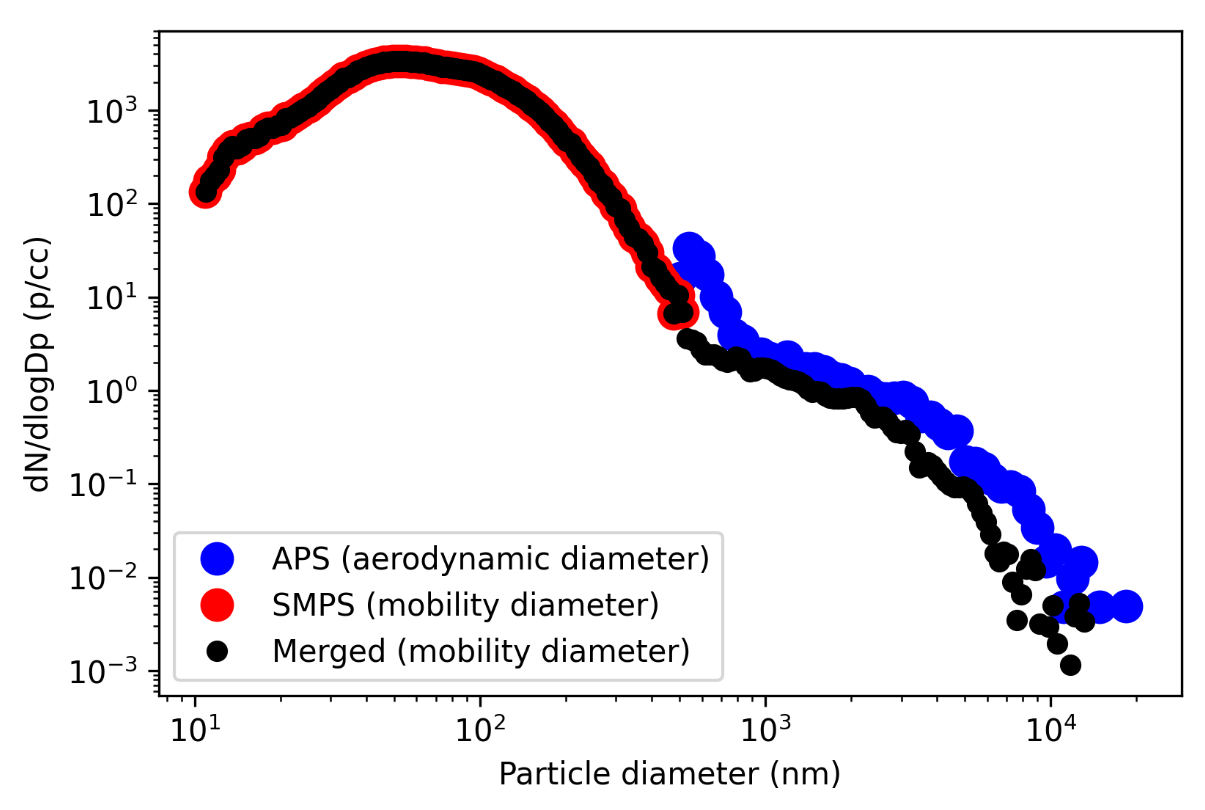
The Atmospheric Radiation Measurement (ARM) user facility currently operates at least four instruments that measure a portion of the ambient aerosol size distribution. Most users are interested in the entire size distribution or a portion of the size distribution that extends across the measurement range of multiple instruments. However, merging these distributions is not trivial because the instruments all employ different measurement principles and, in most cases, report data as a function of different representations of the aerosol diameter.
A new value-added product (VAP) merges size distributions measured by the scanning mobility particle sizer (SMPS) and aerodynamic particle sizer (APS).
The MERGEDSMPSAPS VAP is useful for scientists who need a representation of the aerosol size distribution in the particle diameter range of approximately 10–20,000 nanometers. VAP data can be used for calculating aerosol scattering and mass loading, estimating the impact of aerosol on clouds, and verifying aerosol-related quantities in models.
This VAP merges SMPS- and APS-measured size distributions using a method outlined by Beddows et al. 2010, with some modifications. The VAP converts the APS aerodynamic diameter to a mobility diameter and re-bins the data into the native SMPS bin structure to maintain constant size bin spacing across the entire size distribution. In addition, the VAP calculates integrated number, surface area, and volume concentrations across the entire size distribution.
Data are averaged to a 1-hour time resolution to improve the signal at low particle counts and improve the VAP performance.
Please note: MERGEDSMPSAPS does not adjust the particle counts from either the SMPS or APS. If there are problems with the particle number counts in the input data, particularly in the region where the instrument sizing overlaps, the merged distribution will be lower quality.
More information about MERGEDSMPSAPS is available on the VAP web page.
MERGEDSMPSAPS evaluation data are available from March 15, 2017, through July 31, 2022, for ARM’s Southern Great Plains extended facility E13 near Lamont, Oklahoma. Scientists can use these data now.
Access the data in the ARM Data Center. (To download the data, create an account.)
Feedback on the VAP data and their quality is encouraged to help improve this product, which will soon be available for additional sites with both an APS and an SMPS. To provide feedback, ask questions, or report data problems, please contact ARM translator John Shilling or VAP developer Max Levin.
Data can be referenced as doi:10.5439/1871375.
Reference: Beddows DCS, M Dall’osto, and RM Harrison. 2010. “An Enhanced Procedure for the Merging of Atmospheric Particle Size Distribution Data Measured Using Electrical Mobility and Time-of-Flight Analysers.” Aerosol Science and Technology, 44(11), https://doi.org/10.1080/02786826.2010.502159
# # #ARM is a DOE Office of Science user facility operated by nine DOE national laboratories.

